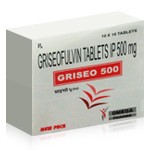Understanding and Treating Fungal Infections Safely and Completely


What Are Fungal Infections and Why Do They Occur?
Fungal infections happen when certain types of fungi grow too much on or inside the body. They often affect the skin, scalp, nails, or other areas that stay warm and moist. Anyone can get a fungal infection, but it is more common when the body’s defenses are weak or personal hygiene is poor.
Common reasons for fungal infections:
- Staying in hot and humid places for long periods
- Wearing damp or tight clothing
- Walking barefoot in public showers or locker rooms
- Using personal items that are not properly cleaned
Fungal infections can cause itching, redness, or peeling skin. Keeping your body clean and dry can help reduce the risk of these infections.
Common Types and Signs of Fungal Infections
There are several kinds of fungal infections, and each type affects different parts of the body. Recognizing them early helps prevent spreading or deeper skin damage.
Most common types include:
- Athlete’s foot: Cracked or peeling skin between toes
- Ringworm: Circular red rash that can appear anywhere on the body
- Yeast infection: Burning and discomfort in private areas
- Nail fungus: Thick, brittle, and discolored nails
Paying attention to changes in your skin or nails helps detect infection early. Knowing the signs makes it easier to choose the right treatment on time.
Everyday Habits That Make Infections Worse
Some daily actions can unintentionally make fungal infections worse. Poor hygiene or sweat build-up can create the right conditions for fungi to grow.
Habits that increase the risk:
- Wearing non-breathable shoes or tight clothes
- Not drying skin after showers
- Sharing towels or grooming items
- Using heavy or oily skincare products
Making small changes in daily habits can stop the infection from spreading. Better hygiene and simple awareness can protect your skin more effectively.
Preventing Fungal Infections Through Better Care
Prevention is often easier than treatment. Following a few simple steps can greatly reduce the chance of developing a fungal infection.
Helpful prevention tips:
- Keep feet, nails, and skin clean and dry
- Change socks and underwear daily
- Use mild soap and clean towels
- Choose breathable shoes and clothing
- Avoid walking barefoot in public places
Cleanliness and regular care protect the skin from fungal growth. Maintaining good hygiene is the best defense against future infections.
When Fungal Infections Need Medical Attention
Sometimes infections become too severe for home care. When this happens, it is important to see a medical professional for proper treatment.
Signs that infection may need treatment:
- Persistent itching or burning
- Spreading rash or open sores
- Nails becoming thick or separated Pain, swelling, or unpleasant odor
Ignoring these symptoms may allow the infection to worsen or return later. Seeking help early ensures faster and safer recovery.
Using Griseo (Griseofulvin) for Fungal Infections
When basic care is not enough, medical treatment with Griseo (Griseofulvin) can be very helpful. This medicine stops the fungus from multiplying and helps the skin or nails return to normal.
Benefits of Griseo (Griseofulvin):
- Fights infections that resist home remedies
- Reduces itching and irritation
- Stops the growth of fungal cells
- Supports healthy nail and skin recovery
It is often prescribed by doctors for fungal infections of the scalp, skin, or nails. Using it under professional guidance ensures effective and safe results.
How Griseo (Griseofulvin) Works and What to Expect
Griseo (Griseofulvin) works by targeting the fungi inside the body and stopping them from spreading. It helps the skin grow new, healthy tissue to replace the infected area.
What patients may notice during treatment:
- Gradual relief from itching and redness
- Clearer, smoother skin over time
- Healthier nail growth after consistent use
- Reduced recurrence of infection with proper hygiene
Patience is important, as some fungal infections take time to heal completely. Following medical advice and staying consistent with treatment helps ensure full recovery.
Maintaining Long-Term Skin Health
After treatment, keeping the skin and nails healthy prevents the infection from returning. Clean living habits, balanced diet, and proper rest all support the body’s defense system.
Simple habits to keep infections away:
- Keep clothing dry and clean
- Trim nails regularly and avoid sharing tools
- Moisturize skin lightly without clogging pores
- Boost immunity through good nutrition and rest
Healthy routines protect the body against future infections. Balanced hygiene and medical care together ensure lasting protection.
Drug Description Sources: U.S. National Library of Medicine, Drugs.com, WebMD, Mayo Clinic, RxList, MedlinePlus, Healthline, Cleveland Clinic, MedicineNet, NHS.uk
Reviewed and Referenced By:
- Dr. Alan Carter, PharmD – Clinical pharmacist with expertise in antifungal therapy. Frequently cited on Drugs.com for reviewing medication safety and dosage guidance.
- Dr. Sarah Thompson, MD – Infectious disease specialist contributing to WebMD and Mayo Clinic for treatment reviews on skin infections.
- Dr. James Miller, PharmD – Pharmacology expert cited by RxList and Healthline for detailed medication analysis and safety evaluation.
- Dr. Olivia Harris, MD – Dermatologist and contributor to MedlinePlus and Cleveland Clinic resources focused on fungal infection prevention and care.
- Dr. Kevin Brooks, MD – General practitioner with publications on NHS.uk and MedicineNet discussing public awareness of fungal diseases.
Article Post: Editorial Team of RXShop.md
(Updated at Oct 30 / 2025)

